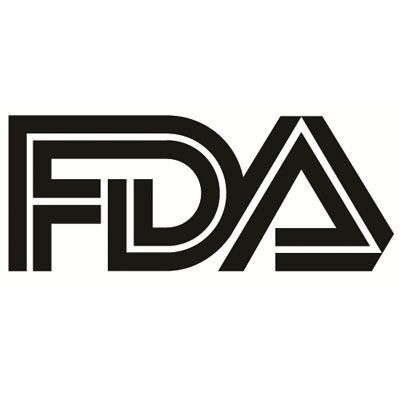News
Article
Oral Menopause Hormone Therapy Linked to Increased Risk of NAFLD
Author(s):
The presence of NAFLD increased from 25.3% to 29.4% among patients receiving oral menopause hormone therapy.
Credit: Fotolia

A new study suggests oral menopause hormone therapy was associated with an elevated risk for development and progression of nonalcoholic fatty liver disease (NAFLD) relative to transdermal administration.
A retrospective cohort study with data from more than 300 postmenopausal women who received menopausal hormone therapy for 12 months, results suggest transdermal administration was associated with a decrease in prevalence of NAFLD while oral administration was associated with an increase in NAFLD prevalence.1
“Because hepatic effects differ based on the route of estrogen administration, the effects of [menopausal hormone therapy] on NAFLD can also differ between transdermal and oral [menopausal hormone therapy] treatment,” wrote investigators.1 “However, the effects of [menopausal hormone therapy] on the prevalence of NAFLD based on the route of estrogen administration have not been evaluated to date.”
Hormone therapy is used to boost hormone levels and relieve some of the symptoms of menopause. It can be administered through systemic products in the bloodstream to all parts of the body or local products affecting only a specific area of the body.2 The health risks associated with hormone therapy depend on the dose and type of estrogen.3
To assess changes in the prevalence and progression of NAFLD after menopausal hormone therapy based on estrogen route and dosage, Sung Eun Kim, PhD, MD, of the department of obstetrics and gynecology at Sungkyunkwan University School of Medicine in Korea, and a team of investigators compared data from consecutive postmenopausal women who received 12 months of menopausal hormone therapy at the Menopause Clinic in Samsung Medical Center from January 2016 to December 2020. To be included in the study, patients were required to be postmenopausal women, aged 45–60 years, have used the same menopausal hormone therapy regimen for at least 12 months, and have undergone a general health screening including abdominal ultrasonography before and after menopausal hormone therapy.1
Patients were excluded if they used tibolone for menopausal hormone therapy, changed the therapy regimen within 12 months, had any other liver disease, had positive serology for hepatitis B or C, consumed more than 10 g of alcohol per day, and used any drugs that could significantly affect hepatic metabolism or body weight.1
In total, investigators identified 368 participants to be included in the study. After dividing by estrogen route, 75 patients were assigned to the transdermal group and 293 were in the oral group. Investigators pointed out age, reproductive or menstrual history, body mass index, blood pressure, and history of chronic medical diseases did not differ between the 2 groups before starting menopausal hormone therapy.1
Investigators compared changes in the prevalence of NAFLD between the transdermal and oral groups before and after 12 months of menopausal hormone therapy, also examining differences in the progression of NAFLD after menopausal hormone therapy based on the dose of estrogen and type of progestogen in the oral group. For the purpose of analysis, NAFLD was defined based on hepatic steatosis from an abdominal ultrasound and progression of NAFLD was defined as newly diagnosed NAFLD after menopausal hormone therapy in women without NAFLD at baseline or exacerbation of preexisting NAFLD after menopausal hormone therapy.1
Among the cohort, 24.7% of patients had preexisting NAFLD. Of those with NAFLD at baseline, 24.0% were in the transdermal group and 25.3% were in the oral group.1
After 12 months of menopausal hormone therapy, the prevalence of NAFLD decreased from 24% to 17.3% in the transdermal group but increased from 25.3 to 29.4% in the oral group (P = .036). Investigators noted the proportion of NAFLD progression was significantly lower in the transdermal group than in the oral group (2.7% vs 11.3%; P = .024). Progression was also more prominent in patients with preexisting NAFLD (16.2%) than without NAFLD (9.6%) in the oral group, but this finding did not reach statistical significance.1
Upon further analysis, serum levels of total cholesterol and low-density lipoprotein cholesterol decreased in the oral group from 202.3 (SD, 45.7) and 119.7 (SD, 33.3) to 195.4 (SD, 31.7) and 114.6 (SD, 28.8), respectively, while triglycerides and high-density lipoprotein cholesterol increased significantly from 104.4 (SD, 59.2) and 59.9 (SD, 9.8) to 118.4 (SD, 98.1) and 70.5 (SD, 16.1), respectively.1
Investigators divided the oral menopausal hormone therapy group into subgroups based on the dose of estrogen and type of progestogen and found no difference in the progression of NAFLD between low-dose and standard-dose MHT (7.1% vs 13.0%; P = .146) or between natural progesterone and synthetic progestogen (14.5% vs 9.9%; P = .295).1
“The findings can help healthcare providers and patients in decision-making regarding choosing the best MHT option, especially in postmenopausal women who already have pre-existing NAFLD or who are at high risk of developing NAFLD,” investigators concluded.1
References:
- Kim SE, Min JS, Lee S. et al. Different effects of menopausal hormone therapy on non-alcoholic fatty liver disease based on the route of estrogen administration. Sci Rep 13, 15461 (2023). https://doi.org/10.1038/s41598-023-42788-6
- North American Menopause Society. Hormone Therapy: Benefits & Risks. Menopause Symptoms and Treatments. Accessed September 22, 2023. https://www.menopause.org/for-women/menopauseflashes/menopause-symptoms-and-treatments/hormone-therapy-benefits-risks
- Mayo Clinic. Hormone therapy: Is it right for you? Accessed September 22, 2023. https://www.mayoclinic.org/diseases-conditions/menopause/in-depth/hormone-therapy/art-20046372





